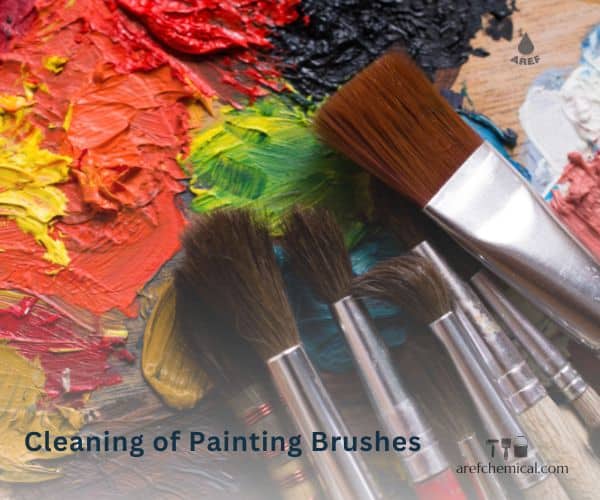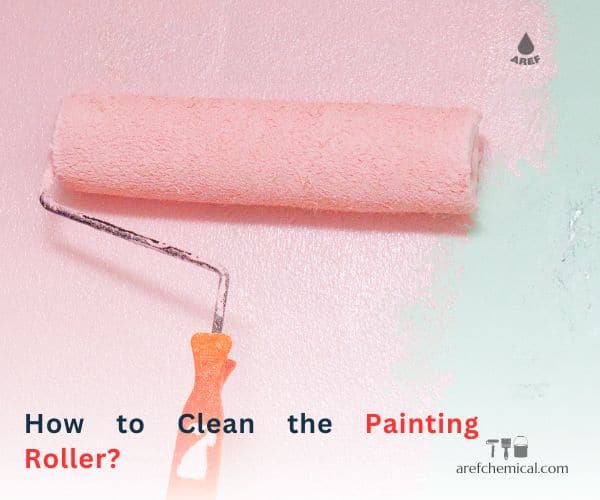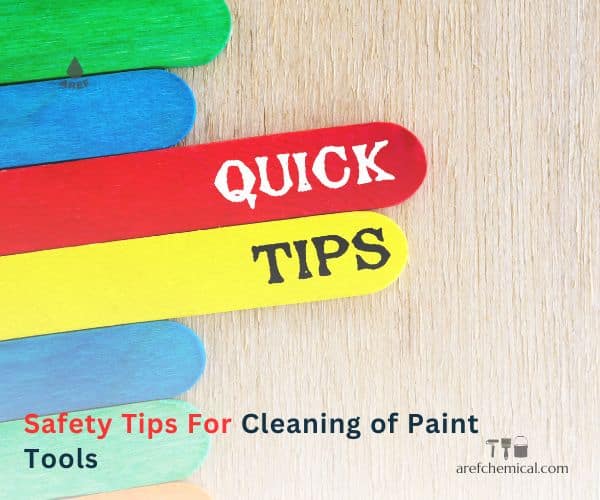Cleaning of painting tools is very important because the artist wants to use them for future works. For an artist, painting is one of the beautiful and creative arts that requires the use of various tools such as brushes, palettes, and colors. If you clean the equipment as soon as possible after use, the surface will likely be easily cleaned. Regular maintenance and cleaning of painting tools not only increases their life but also prevents the quality of your work. In this article, we will examine different methods of cleaning painting, and painting equipment.
Cleaning brushes
Brushes are one of the most important painting tools that require special attention and care. To clean the paint pens, you can wash them in warm water and then remove the paint and stains with acetone. You can also use special cleaning solutions. The cleaning of painting tools, especially brushes, depends on the type of paint you have used. For example, acrylic paint is different from oil paint. We will explain each of them in the following sections.
Blue colors (acrylic, watercolor)
- Pre-wash: Wash the brush in warm water to remove excess paint.
- Using mild soap: Apply a little mild soap (like hand soap) on the brush and gently massage it with your hand.
- Final wash: Wash the brush again with warm water to remove all the soap and paint.
- Drying: Place the brushes horizontally or upside down in a container to dry.
Oil paints
- Use of thinner or solvent: put the brush in a small container containing the appropriate thinner or solvent and rotate it slowly until the colors dissolve.
- Soapy wash: After removing most of the paint with the solvent, wash the brush with soap and warm water.
- Doubting: To dry the brushes horizontally or upside down in a container.
Cleaning pallets
Palettes also need regular cleaning due to direct contact with colors. For the color palette, you can use special cleaning solutions for colors. You can also use smooth surfaces suitable for mixing colors to wipe them off easily. For the Cleaning of painting tools, we will discuss how to clean all of the palettes.
Glass or plastic pallets
- Remove the dried colors: using a spatula or spatula, remove the dried colors from the surface of the palette.
- Washing with soap and water: Wash the palette with warm water and soap.
- Drying: Dry the palette with a towel or let it air dry.
Wooden pallets
- Remove the dried colors: using a spatula or spatula, remove the dried colors from the surface of the palette.
- Use of oil: apply a little linseed oil or similar oils on the palette and wipe with a soft cloth to remove the colors.
- Drying: Dry the pallet in the open air.
Cleaning of painting tools and other painting equipment
Other tools such as spatulas, spatulas, and paint containers also require cleaning.
Spatulas and spatulas
- Remove the dried paint: Using another spatula or a cloth, remove the dried paint.
- Washing with soap and water: Wash the tools with warm water and soap.
- Drying: Dry the tools with a towel or let them air dry.
color containers
- Emptying the excess colors: Pour the remaining colors into a separate container.
- Washing with soap and water: wash the dishes with warm water and soap.
- Drying: Dry the dishes with a towel or place them in the open air to dry.
Cleaning clothes and hands
To avoid persistent stains and colors on clothes and hands, use protective equipment such as gloves and special cleaning liquids to remove them.
How to clean the painting roller?
Cleaning of painting tools such as paint rollers and paintings depends on the type of paint you have used. Here are the cleaning methods for the two main types of paint, water-based and oil-based:
Water-based paints (such as latex paint):
- Removing the excess paint: First, remove the excess paint on the roller using the edge of a spatula or a special tool.
- Washing with water: hold the roller under running water and remove the paint from the fibers of the roller by hand or using a soft brush.
- Using detergent: If the color does not come out well, you can use a small amount of dishwashing liquid or mild detergent.
- Final rinse: After all the paint is removed, rinse the roller thoroughly with water to remove any detergent.
- Drying: Place the roller in a dry and ventilated environment to dry completely.
Oil-based paints:
- Remove the excess paint: As above, first remove the excess paint from the roller.
- Use of thinner or solvent: instead of water, you should use thinner or solvent suitable for oil-based paint. Place the roller in a container containing solvent and let it soak for a while.
- Washing: After soaking, remove the paint from the roller fibers using your hands or a soft brush.
- Rinsing using fresh solvent: Wash the roller in fresh solvent to remove any paint residue.
- Drying: As with water-based paints, place the roller in a dry, ventilated environment to dry completely.
Safety tips for cleaning of paint tools
For safety when cleaning painting equipment, you can consider the following points:
- Using suitable and protective clothing such as gloves and masks to avoid direct contact with chemicals in paint and cleaning solvents.
- Ensuring proper connection of caps and protective covers on bottles and containers of chemicals.
- Proper ventilation in the work environment and the use of a breathing mask if necessary.
- Using suitable cleaning solutions for washing tools and equipment.
- It is also necessary to clean the tools and devices well after use and pay attention to chemicals.
- In case of ingestion or contact with chemical contents, see a doctor immediately.
By following these safety tips, you can enjoy more safe and hygienic cleaning of painting tools.
Final remarks
– Regular cleaning: clean the painting tools after each use to prevent the accumulation of dried paints.
– Using the right materials: use suitable solvents and detergents for each type of paint.
Conclusion
Cleaning of painting tools and maintaining your painting equipment are very important. By implementing these suggested methods, keep your painting and painting equipment clean and usable at all times. Remember that the cleanliness of the equipment helps to ensure that your work always contains high quality. Each device and tool has its own cleaning method. Also, different colors, such as acrylic or oil, each have their own method.







12 Responses
great
thank you
so usefull
it’s really important
oh very nice
wow really fantastic
https://behdama.com/%d8%a7%d9%81%d8%aa-%d9%81%d8%b4%d8%a7%d8%b1-%d9%be%da%a9%db%8c%d8%ac/
thank you good luck
https://behdama.com/%d9%be%da%a9%db%8c%d8%ac-%d8%a8%d8%b1%d9%82%db%8c/
Cleaning of painting tools and maintaining painting equipment are important I think.
fantastic
https://tavatranslation.com/%d8%b2%d8%a8%d8%a7%d9%86-%d8%a8%db%8c%d9%86-%d8%a7%d9%84%d9%85%d9%84%d9%84%db%8c/
yes your right
https://tavatranslation.com/%d8%b2%d8%a8%d8%a7%d9%86-%d8%a8%db%8c%d9%86-%d8%a7%d9%84%d9%85%d9%84%d9%84%db%8c/
thanks
https://daroosf.com/
Cleaning painting tools is important.
https://qomtamirat.com/